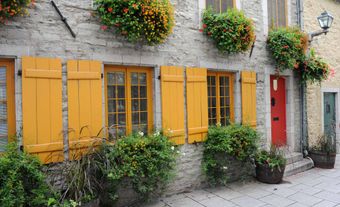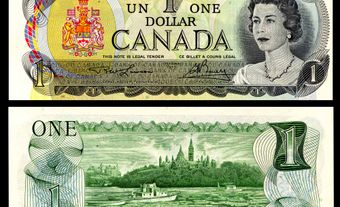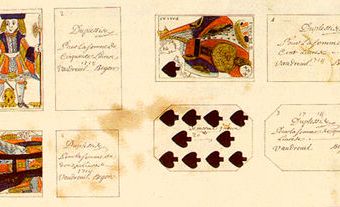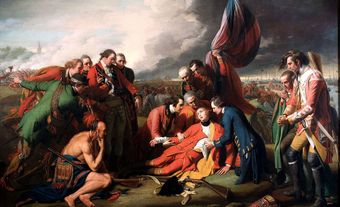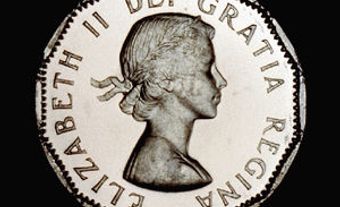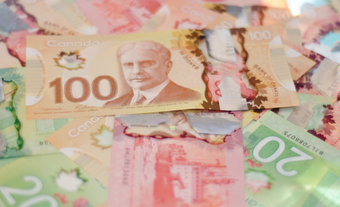Playing-card money was a type of paper money used periodically in New France from 1685 to the British Conquest in 1763. Playing cards issued by the king — later replaced with white cards cut to various shapes — held values equivalent to French livres.

History
The administration of New France counted on the arrival of cash from France in order to pay civil servants, suppliers, soldiers and clerks. There was confusion if the ship did not arrive until the end of the season, and even more if it did not come at all. In 1685, Intendant Jacques de Meulles invented a type of paper money with the purpose of meeting the expenses. He printed various face values on playing cards and affixed his seal to them. When the king’s ship arrived, he redeemed this “card money” in cash. This system ended after 1686, but it was necessary to return to it during the period 1689–1719. In 1714, card money to a value of 2 million livres was in circulation. Some cards were worth as much as 100 livres.
The king later returned to using card money in 1729 because the merchants themselves demanded it. This time, the money took the form of white cards without colours, which were cut or had their corners removed according to a fixed table. The whole card was worth 24 livres (which was the highest sum in card money). With the corners cut off, it was worth 12 livres. Other cuts carried other values.
In the 18th century, card money was not the most important form of paper money. There was the certificat (certificate), a certified sum given to the supplier by the storekeeper. The ordonnance, a promissory note, was signed by the intendant on a printed form. Like cards and certificates, the ordonnance was redeemable by a lettre de change (bill of exchange) on the Naval Treasury. Finally, there was the lettre de change, or traite, used between private citizens to avoid a cash transfer. The state also used this form of money, particularly to redeem paper money.
After the Conquest of New France in 1763, Canadians still held some 16 million livres in paper money, of which only 3.8 per cent was in card money. The Treaty of Paris provided for the settlement of paper-money obligations. British speculators bought paper money from colonists at a discount, hoping to redeem close to face value for it. After negotiations, France agreed to convert card money to government bonds. By 1771, however, the French government’s financial troubles had made these bonds worthless.

 Share on Facebook
Share on Facebook Share on X
Share on X Share by Email
Share by Email Share on Google Classroom
Share on Google Classroom
